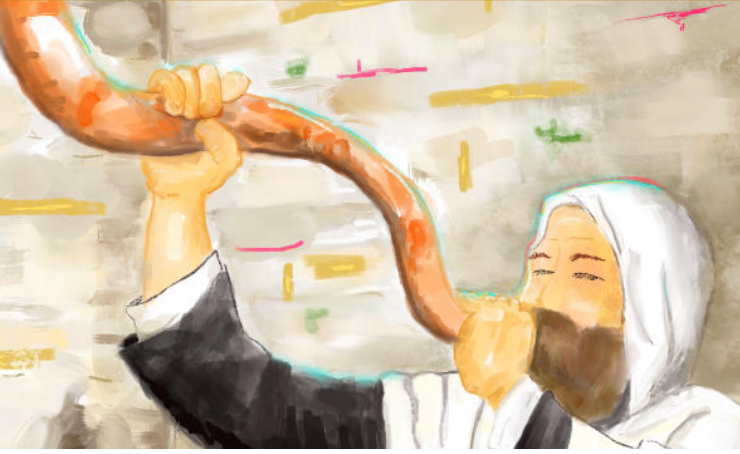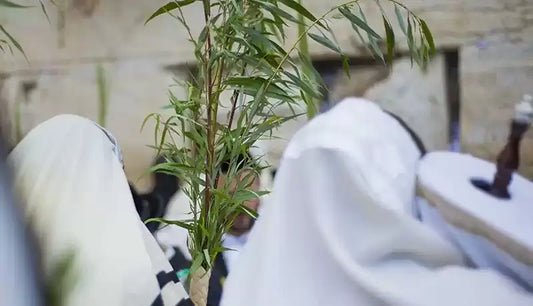Rabbi Hayim Asher Arking
Rabbi Ezra Ghodsi
The Rambam writes that the Shofar on Rosh Hashana alludes to a critical message: "awaken from your slumber; those who sleep deeply, rouse yourselves from your stupor. Examine your actions, repent, and remember your Creator. Those who have forgotten the truth…… Look into your souls and improve your ways and deeds, abandon your evil ways and bad thoughts."
The halachot surrounding the performance of this cherished mitzvah enables us to gain the full effect of the Shofar, inspiring our souls to the highest level of repentance.
Who is obligated?
Since Shofar is a time-bound commandment, women are not obligated. However, because of the significance of this mitsvah, and its vital message, many women have developed the custom to hear the Shofar. Since they are not actually obligated, one who is blowing Shofar exclusively for women should not recite a beracha before blowing.
How many blasts is one obligated to hear?
When the Torah discusses the blowing of the Shofar, the word ‘teruah’ is written three times, teaching that we must hear three ‘teruah’ blasts. The word ‘teruah’ denotes a sort of crying; It may either refer to short moans, longer wails, or a combination of the two. Since we don’t know which it actually is, we blow ‘shevarim’ – a series of longer sounds, and what we call ‘teruot’ – a rapid set of staccato sounds. We therefore blow all three kinds: shevarim, teruah, and shevarim-teruah, three times each , for a total of ten sounds.
The Gemara derives from other pesukim that a ‘tekiah’ (a single, long blast) must be blown before and after each teruah. This essentially teaches us that we must hear thirty teruah blasts on Rosh Hashana.
Why do we blow more than thirty blasts?
The Gemara asks: “why do we blow some tekiot while sitting and then more while standing?” The Gemara answers that it is intended to confuse the Satan, when he sees how beloved the mitsvot are to us. Alternatively, it is explained that when the Satan hears additional sounds, he does not know if perhaps it is the day of the final redemption, when the Shofar will be blown.
When do we blow the Shofar?
Before the Torah is returned to the Hechal, the Berachot of the Shofar are recited, and thirty sounds are blown. The one blowing stands near the Torah, while the congregation remains seated. We thereby hope to invoke the merit of receiving the Torah, which took place amid Shofar blasts, as the Torah states: (Shemot 19:16) “and the sound of the Shofar became progressively more powerful…”.
The rest of the blasts are integrated within the tefillah of Musaf. The second set of thirty is blown during the silent Amidah; three sets of ten sounds, after each segment of the Amidah. The third set of thirty is blown during the hazarah of the tefillah, in the same manner.
Originally, the Shofar was blown during the prayer of Shaharit. However, in the era of the Mishna, there was a decree forbidding the blowing of the Shofar. The gentiles would keep watch on the Jews throughout the morning of Rosh Hashana until midday, when Shaharit can no longer be prayed, to ensure that the Shofar would not be blown. The Rabbis therefore moved the Shofar blowing to Musaf, which can be prayed later in the day. Ever since then, we have kept the Shofar blowing in the Musaf prayer. It is blown after each of the three segments of Musaf, as the Shofar relates to each segment.
Why is the Shofar also blown after mussaf?
We blow another ten blasts during the kaddish that follows the Amidah, bringing us to a total of one hundred blasts.
In the era of the Judges, soon after we entered the Land of Israel, there was a period of time when we were oppressed by the Canaanim. Sisera, their powerful general, came to attack with nine hundred chariots. It was assumed that he would return victorious, and his mother was waiting, looking out the window to greet him. When he did not return, she rationalized “perhaps he is dividing the loot”. However, as time passed, she came to the realization that Sisera must have been killed. The pasuk describes the crying for her son with the word ‘yevava’, which is an Arameic version of the word teruah. Since she cried one hundred times to express her total grief, we blow one hundred sounds, to show that our remorse is complete.
The final teruah gedola is added before Alenu, to confuse the Satan.
Why is the Shofar covered before it is blown?
The Shofar should be covered until the berachot are finished. Some reasons for this minhag are:
1. When Abraham was preparing the altar to sacrifice his son Yishak, he kept Yishak covered until the very last moment, because he feared that Yishak would receive a blemish rendering him unfit to be offered. Being that Shofar is a reminder of the Akedah, we cover the Shofar until the very last moment.
2. To prevent the Satan from taking control of the Shofar.
Do I sit or stand during the blowing?
The one blowing the Shofar needs to stand, just is done by all mitzvot, while the congregation remains seated during the first set of blasts. Some have the custom to stand while the berachot are recited and then to immediately sit down for the Shofar blasts. Most communities, however, sit during the berachot as well.
What do I think about while the Shofar is being blown?
First and foremost, one must have in mind that he is fulfilling the commandment of the Torah of hearing the Shofar. Secondly one should mentally admit that he had sinned, and feel a renewed commitment to listen to the Word of Hashem.
Rav Saadia Gaon writes ten important ideas represented by the Shofar:
1. On Rosh Hashana, Hashem completed the creation of the world and reigned as King over it. It is customary for kings to herald their reign with trumpets and horns. We, therefore, blow the Shofar on Rosh Hashana to show that we are accepting the Kingship of Hashem.
2. Rosh Hashana is the first of the Ten Days of Repentance. We blow the Shofar to arouse ourselves to do teshuva.
3. We remember the giving of the Torah at Har Sinai, which was accompanied by Shofar blasts. Essentially, we are recommitting to all of the mitsvot and accepting upon ourselves as we had originally with na'ase v'nishma – we will perform and we will listen.
4. To remind us of the words of the Prophets, which are compared to a Shofar.
5. To remind us of the destruction of the Bet Hamikdash and the wailing sound of war-cries. When we hear the Shofar, we will request Hashem to rebuild the Bet Hamikdash.
6. To remember Yishak Avinu who was willing to give his life to be sacrificed. We too will accept upon ourselves to give our lives for the sake of Hashem.
7. The Shofar causes us to be afraid, tremble, and submissive to Hashem.
8. To remember the great day of judgment which will take place with Shofar blasts.
9. To remind us and inspire us to yearn for the ingathering of the exiles which will take place with Shofar blasts.
10. To remind us of the resurrection of the dead which will take place with Shofar blasts.
May I speak during Musaf?
From the beginning of the Shofar blasts until after the hundredth blast, one should not say anything unrelated to the mitsvah at hand. One who uses the restroom may recite the blessing of Asher Yasar.
What if I came late?
If one missed the berachot, he should recite the berachot when he arrives, before hearing the Shofar. If he already missed some blasts of the Shofar, he should listen to where the congregation is up to, and calculate how many he had missed, so he can make them up afterwards.
I am blowing for someone at home, which Berachot do I recite?
If one is blowing for a man or boy over the age of bar-misvah, either he or the one who he is blowing for recites the blessing of Lishmoa Kol Shofar. If it is the first day, or if the listener had not heard Shofar on the first day, the blessing of Shehehi’anu is also recited. When blowing for women, no berachot are recited.
When blowing for someone at home, those listening should stand, unless doing so is difficult.
May the zechut of Shofar bring the sounds of the Shofar of the Final Redemption.




